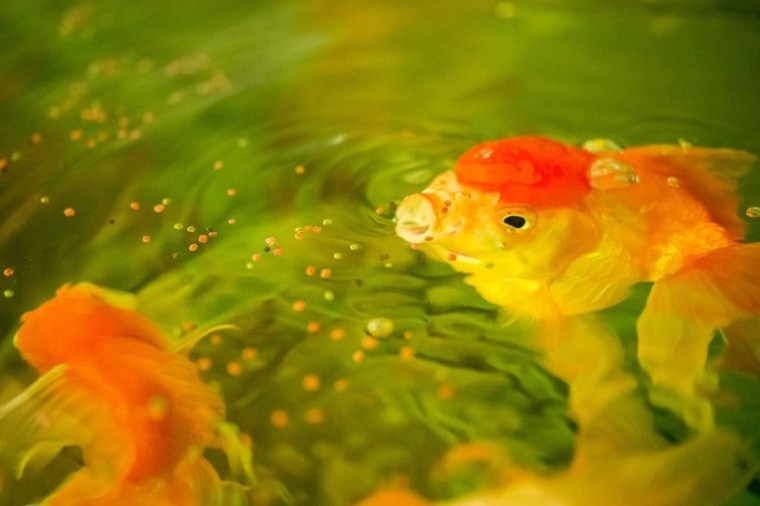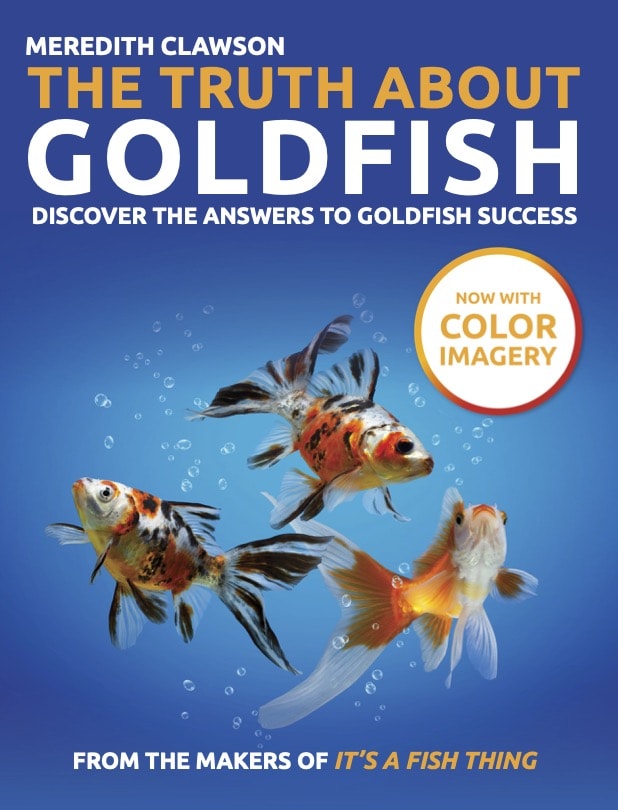How Much & How Often You Should Feed Your Goldfish - 2022 Guide

Having an aquarium is an excellent way to enjoy the benefits of pet ownership with minimal maintenance when compared to owning a dog or cat. That doesn’t mean that they don’t require some care. Knowing how much and how often to feed your fish is a vital part of keeping them. Goldfish are the first ones many people get as children, with over 480 million sold each year.
Bear in mind that when you have goldfish, you’re recreating their native habitat in your tank. Water chemistry is a delicate balance in which food plays an essential role. Suffice to say that you can’t overemphasize its role in your pet’s health and the quality of its environment. Let’s begin our discussion with a detailed look at why you need to get it right.

The Reason Behind the Right Schedule and Amount
The reason feeding your goldfish correctly matters is because of the nitrogen cycle. This term explains the breakdown process of organic waste in your tank, whether it’s from your fish, live plants, or decaying food. These things produce ammonia, which is highly toxic to anything living in the water. Beneficial bacteria break it down into nitrites and, finally, nitrates.
Nitrates provide an excellent energy source for live plants that need nitrogen to survive. The question of food comes into play both from the goldfish’s waste and decaying matter. If you overfeed your fish, the excess will increase the ammonia in the water, making it difficult, if not impossible, for them to live. That makes the amount and timing critical.

The Diet in the Wild
The goldfish is a member of the Cyprinidae or Carp family. Its feeding behavior isn’t a lot different from the species that gives the group its name. It is an opportunistic omnivore that will eat anything, from plants to insects to crustaceans, such as crayfish. Their diet varies with their preferences and, more importantly, what’s available.
Types of Goldfish Foods
If you stroll down the fish food aisle at your pet store, you’ll see a broad spectrum of choices from which to choose. The type is a factor in the feeding schedule. Flakes are probably the ones you remember giving your goldfish as kids. They’re inexpensive and easy to use. On the downside, they break down quickly once they hit the bottom. Any excess will increase ammonia levels in your tank.
Pellets are an excellent alternative that will stay intact longer. They can help prevent your goldfish from getting bloated from swallowing too much air. That’s a problem with fish that have physostomous swim bladders like goldfish. The direct connection between this structure and their GI tract can cause the issue with gulping air when feeding floating foods.
Many goldfish die as a result of improper feeding, diet, and/or portion sizes – which can be easily prevented by proper education.

That’s why we recommend the best-selling book, The Truth About Goldfish, which covers everything about goldfish nutrition, tank maintenance, illnesses & more! Check it out on Amazon today.
You’ll also see a variety of freeze-dried options, such as bloodworms, crickets, and brine shrimp. They offer excellent ways to supplement your goldfish’s diet to ensure it gets the necessary 29-percent protein it needs. That amount provides the correct protein-energy ratio. The keyword is a supplement. Commercial diets have the right proportion of nutrients to support your goldfish’s good health.

Amount to Feed
The amount to feed first of all depends on the type of food. You should feed flake foods only that amount that you observe them consume within a minute or so. Goldfish can learn when it’s time to eat and make associations between seeing you enter the room with the can and getting fed. We suggest keeping it on a regular schedule to prevent overeating.
Pellets are a different story. The recommendation about the schedule still applies. However, it’s essential to gauge your goldfish’s appetite to give it the right amount. You can start with three or four, depending on the size and ingredients in the food. Observe how much it eats and adjust it accordingly.
Feeding Schedule
Once a day at around the same time is the best approach to feeding goldfish. However, the water temperature can also play a role. Goldfish do best when kept in an aquarium heated to around 68℉. At that temp, once a day is a safe bet. However, if it’s colder, you may have to cut back to every other day.
The reason is that the ambient water temperature will affect the fish’s metabolism. If it’s cooler, it’ll take longer to digest its food. Likewise, if it’s warmer, your goldfish will metabolize it faster, which may mean two times a day instead.

Final Thoughts
Having goldfish is an enjoyable hobby. It is relaxing just to watch them swim around in their aquatic world. Feeding them the correct amount on the proper schedule is a vital part of keeping them healthy. After all, goldfish are relatively long-lived with the right care, with some reaching 10 or more years. The best approach is to observe your fish and feed it when it can consume in a short time.
Featured Image Credit: Rabbitmindphoto, Shutterstock



Không có nhận xét nào